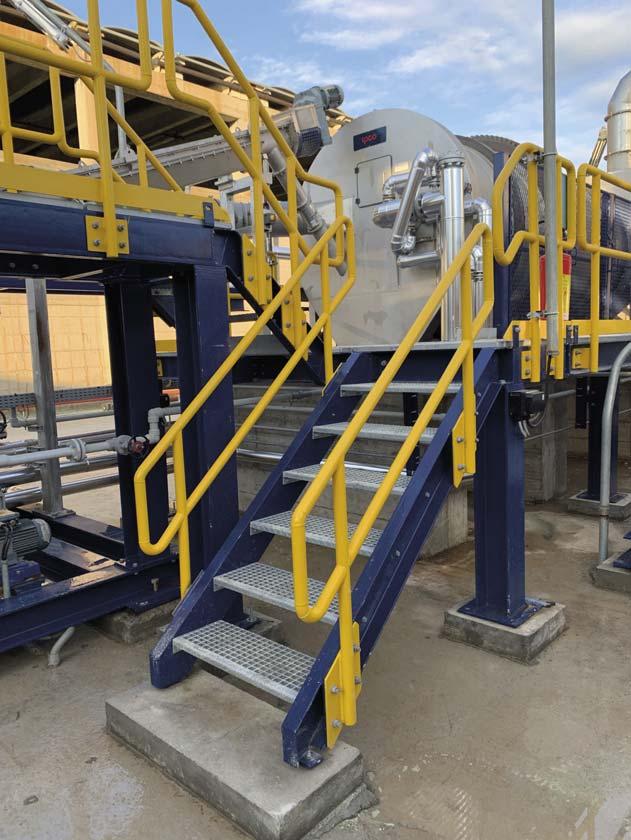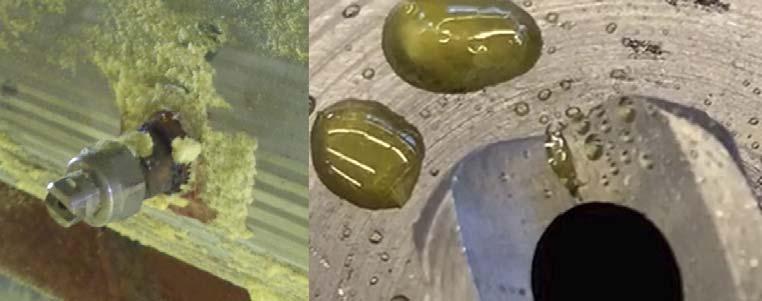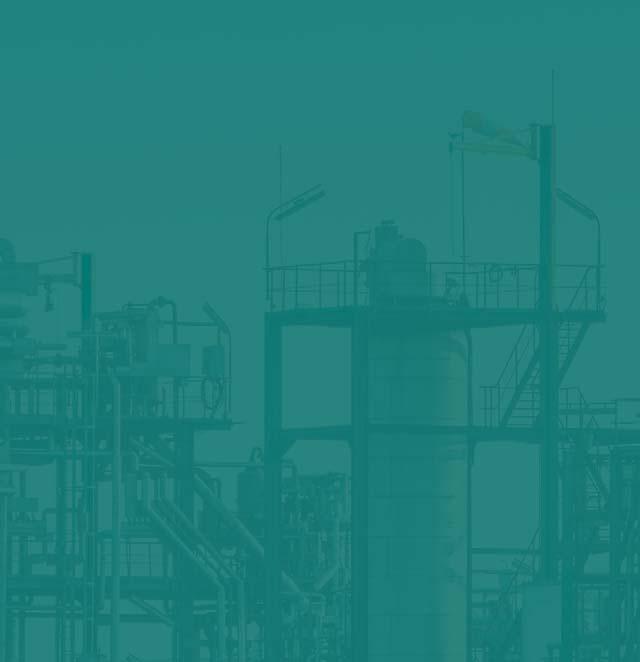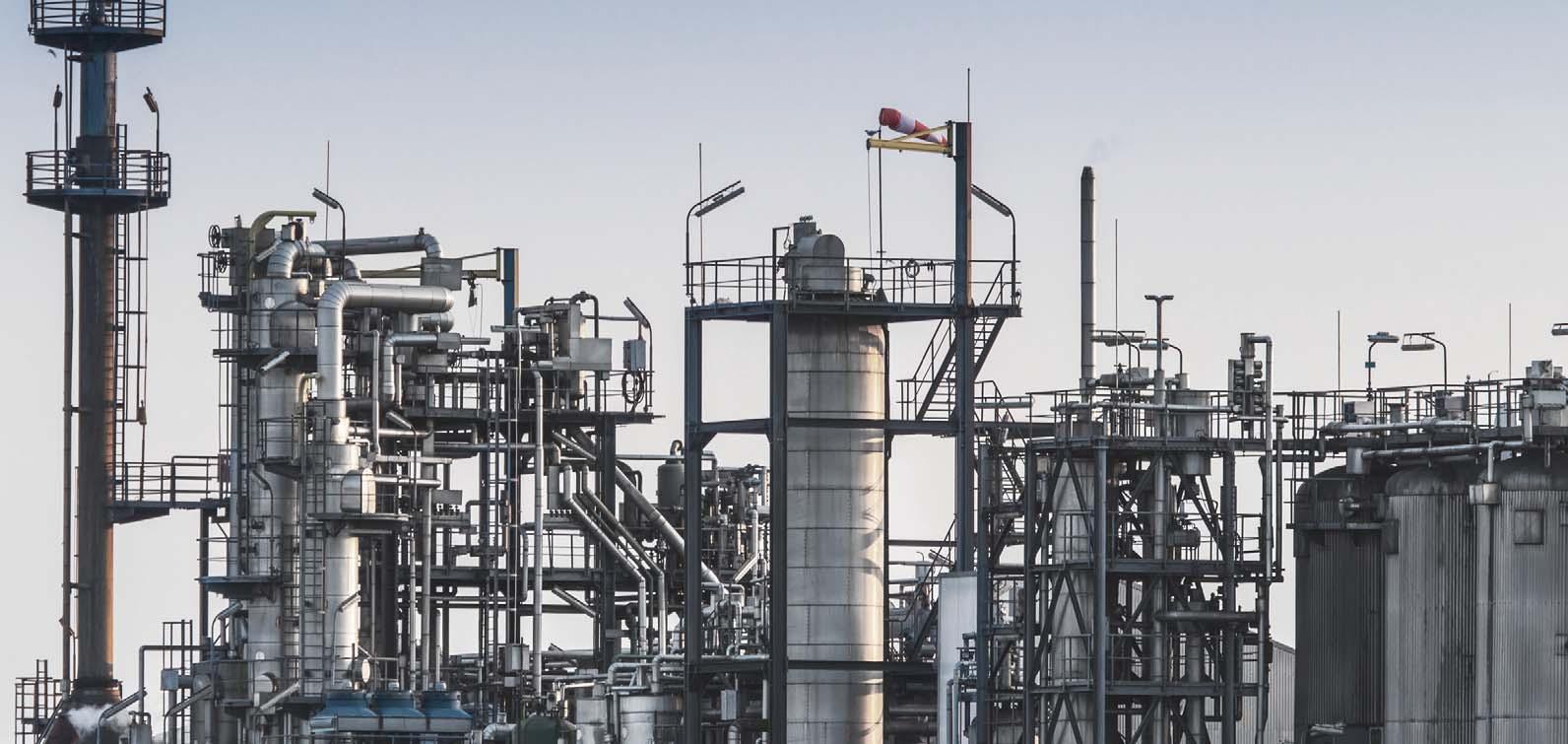
9 minute read
Removing the ‘art’ from state-of-the-art















Casey Metheral, IPCO Germany, outlines innovative solutions to a number of common issues faced by sulfur drum granulation operators and maintenance personnel.
There are a number of nagging issues that have bothered sulfur drum granulation operators and maintenance personnel for decades. Operating a piece of industrial machinery should not be an ‘art’, even if the machinery is ‘state-of-the-art’. It should be straightforward and easy to understand.
This article will explore the root causes of the common issues faced by operators and maintenance personnel, and outline strategies to correct or minimise each of the problems.
IPCO’s latest drum granulation technology for the production of premium quality sulfur granules, the SG20, is now commissioned and operating (Figure 1). The technology is located at the site of a long-standing customer that operates multiple sulfur solidifi cation facilities in Italy. The location provides easy access for customer visits while also providing a challenging climate that can push the operating limits of the machine under a wide range of ambient conditions.
The new unit, which is a scaled-down version of the higher-capacity SG30 (up to 2000 tpd), is intended for forming at medium-range capacities (up to 800 tpd) while following the same operating principles of the larger model (Figure 2). It is a single-pass process, which means there is no need for screens or recycle conveyors to send sulfur through the drum multiple times. The sulfur seeds (the small starting point of every sulfur granule) are created externally from the drum, which simplifi es the seed generation process and allows wider fl exibility with the incoming liquid sulfur temperature. External seed generation also provides an innovative way to recycle the sulfur waste stream from the wet scrubbing system, which is further discussed in this article. The model is also skid mounted to reduce installation time and ensure a compact design.
Issue 1: sulfur build-ups
It is no secret that older drum technologies require shutdowns every 12 to 24 hours to clean out various parts of the system to maintain steady operation. While there are examples where granulators have been run for extended periods, this results in a signifi cantly longer shutdown due to a more intense cleanout (Figure 3). After identifying the exact points in the system where sulfur build-ups occur, and studying each one, IPCO has
designed the system to minimise this issue. And while specifi c details cannot be shared in this article (due to the intellectual property involved), it is possible to operate the unit steady for a full week before requiring a shutdown to do a minor cleanout.
Issue 2: frozen and plugged sulfur nozzles/product quality
Nozzles for spraying sulfur are an integral part of any drum granulation system. Considering that liquid sulfur needs to be maintained within a specifi c range of temperatures (approximately 120 to 160°C), any ‘cold spots’ in the sulfur system have the potential to cause a problem. In previous technologies, sulfur spray nozzles on the sulfur header in the drum have always been cold spots because they extend outside of the steam-jacketing (Figure 4). If the liquid sulfur is not properly removed when the system is shut down, the sulfur will freeze inside the nozzle tip and prevent fl ow during the next start-up. Even if the spray nozzle is cleared of sulfur during a shutdown, but the system is down for an extended period, sulfur vapour from inside the header can condense and freeze in the nozzle tips and prevent a proper start-up. Fixing this requires an operator to manually clean out the nozzle or replace it before starting up the system. A single frozen nozzle can easily make the difference between premium granules and off-specifi cation product. IPCO has removed this problem with the industry’s fi rst heated sulfur spray nozzle, meaning that operators no longer need to consume time inside the drum rectifying frozen sulfur nozzles.

Issue 3: drum roller maintenance
Granulation drums are large and heavy pieces of equipment that rotate on rollers (Figure 5). They are required to rotate for two reasons: to form curtains of falling sulfur granules in the drum, and to advance the granules from the inlet to the outlet. Other technologies will place the drum on an angle to use gravity to advance the granules, which creates high levels of stress on the rollers and alignment issues that require ongoing maintenance. IPCO granulators use a completely level drum with angled fl ights to advance the product to the outlet, which prevents unnecessary wear and tear on the rollers, and no maintenance is required to keep the unit aligned.
Issue 4: dust emissions and scrubber waste
Figure 1. IPCO SG20 in Italy.
Figure 2. Basic process flow diagram of IPCO SG. A drum granulator is essentially a large heat exchanger, converting a liquid into a solid. The inlet conditions directly impact the outlet conditions. Drum granulators use air and water to remove heat from sulfur to allow it to solidify. Air is pulled into the drum, water is evaporated into the air as the sulfur cools, and fi nally the air is discharged to the atmosphere. This air will contain sulfur dust that needs to be managed. Dust emissions handling in drum granulation has previously always involved trade-offs with only two options available, neither of which are attractive: Steam-jacketed cyclone – this technology melts the captured sulfur dust, creates sulfur vapour, and ultimately has high dust emissions. This creates major problems for operating in environmentally sensitive areas. It is also a very high consumer of steam as it heats up the air stream while melting the sulfur dust. Wet scrubber with dust collection system – this technology captures the sulfur

dust and creates a waste sludge (fine sulfur particles and water). This sludge needs to be further processed in some way. Traditionally, it is melted, filtered, and then fed back into the liquid sulfur supply system. While this is more complicated than the steam-jacketed cyclone, it allows for lower dust emissions.
A new option has been invented to solve this problem. First, a wet scrubbing system was chosen so there would be no compromise on sulfur dust emissions. Then, the waste stream of the wet scrubber was directed into the external seed generation system. By injecting this waste stream directly back into the process, the captured dust is consumed as seed in the drum (Figure 2). This means that all the remaining trade-offs are avoided. This equates to zero extra work to operate and maintain sulfur melting/fi ltering equipment, and lower energy consumption of the system.
Issue 5: H2S emissions
Sulfur that was originally produced from hydrocarbons inevitably contains some level of hydrogen sulfi de (H2S) when it enters a sulfur forming facility. The drum granulation process involves spraying liquid sulfur through nozzles, which releases a portion of this H2S into the air stream.
Depending on how much H2S is in the liquid sulfur supply and the facility’s stack emissions requirements, IPCO’s drum technology can be equipped with an H2S scrubbing system to meet any environmental regulations. This is exactly what has been done with the SG20 in Italy to meet the emissions requirements.
Issue 6: consistent operation
Perhaps the biggest challenge operators face is understanding how to operate a drum under a countless number of scenarios (dry vs humid, day vs night, summer vs winter, low production rate vs high production rate). While it is possible to set a drum granulator with one set of parameters and let it run through the changing conditions, this system will not operate in an optimum condition. This will result in poorer product quality, wasted water, and build-ups that lead to shutdowns.
Consistently producing high quality granules at the discharge of a drum relies on maintaining consistent conditions inside the drum. When the inlet conditions change (e.g. ambient temperature and humidity, liquid sulfur temperature and production rate), an operator must compensate for these changes by adjusting operating parameters.
In the past, adjustment of operating parameters relied on a high level of knowledge

Figure 3. Major build-up (left) vs minor build-up (right) inside ducting.
Figure 4. Unheated nozzles (left): sulfur can solidify. Heated nozzle (right): no solidification.


Figure 5. SG20 drum.

Figure 6. Operator guidance system.
and operator experience to understand how the system reacts under varying conditions. Some of this knowledge would come from the drum supplier during initial commissioning of the unit. Typically, the supplier would help commission the equipment, and have the unit running smoothly before they left site. It would then be up to the operators to determine how to adjust parameters as the operating conditions changed. Unfortunately, this leaves many clients struggling to maintain the same product quality that was achieved during commissioning. Follow up visits from the supplier are required and, little by little, the client may gain enough experience to run the unit on their own. Unfortunately, clients must often settle for lower quality product because they simply do not have the experience to run it as it was intended.
IPCO has developed a process simulation that considers all the relevant process parameters and provides guidance on how to control the unit. This was accomplished by analysing an extensive collection of operating data from both the SG20 and SG30 to build a process simulation that can be applied to any operating conditions around the world. The result is an operator guidance system that removes the guesswork and allows clients to operate successfully and confi dently in any conditions (Figure 6). This takes the ‘art’ out of the operation, as it requires operators to simply follow the instructions provided.
Conclusion
Historically, drum granulation has provided the highest quality sulfur product, but there have been trade-offs with the level of process complexity and stack emissions. The latest features incorporated into IPCO’s drum granulators resolve the biggest issues customers are facing. This ensures that all operators, regardless of experience level, have an environmentally friendly process that is simple and safe to operate, while producing the highest quality product.
T +49 2961 7405-0 T +1 704 716 7022


Your Specialist for PRESSURE RELIEF SOLUTIONS
Consulting. Engineering. Products. Service.











